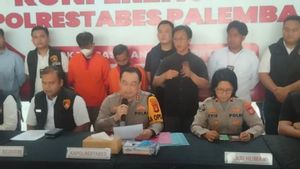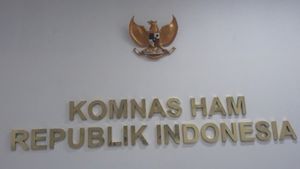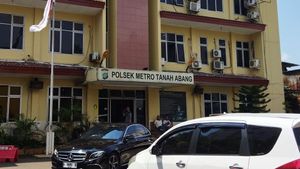JAKARTA - The Meteorology, Climatology and Geophysics Agency (BMKG) recorded a significant increase in earthquake activity in the Indian Ocean south of Bengkulu-Lampung in the last three months. Residents, especially the coastal areas of Bengkulu, Lampung and Enggano Island, are urged to increase awareness.
"BMKG monitoring results show that the earthquake zone in the Indian Ocean south of Bengkulu and Lampung is currently experiencing an increase in activity since the last three months," said BMKG Coordinator for Earthquake and Tsunami Mitigation Daryono quoted by Antara, Friday, February 19.
Daryono said that since November 2020, there have been 16 significant earthquakes with magnitudes above 5.0 that rocked the Bengkulu-Lampung earthquake zone south. The latest earthquake with a magnitude of 5.1 shook Bengkulu on Thursday, February 18 at 17.43 WIB.
Seismicity maps in the Indian Ocean south of Bangkulu and Lampung show striking clusters of earthquake centers, with the strongest earthquake being the 6.3 magnitude Enggano Earthquake on Wednesday, February 10 at 19.52 WIB.
In this zone there was also a double earthquake with magnitudes of 5.3 and 5.5 on Saturday, February 13 at 11.18 WIB and 11.30 WIB.
"Our hope is that the series of significant earthquakes that rocked Bengkulu-Lampung will end soon, but if in the next few days it continues, we must increase our vigilance, especially the coastal communities of Bengkulu, Lampung and Enggano Island," he said.
Therefore, self-evacuation must be properly understood by coastal communities by making strong earthquake shocks felt on the coast as tsunami early warnings. So that coastal residents must immediately move away from the beach when they feel the shock of the strong earthquake.
This method has proven to be able to minimize casualties as was done by the people of Simeulue Island, Aceh with a legacy of local wisdom called "smong" which has been applied for hundreds of years in facing the tsunami.
According to Daryono, smong should be adopted by people who live on tsunami-prone beaches.
"Although we may also be faced with the fact that a strong earthquake that occurs does not necessarily trigger a tsunami, this is what precautions must be done so that we can survive the tsunami," he added.
Apart from Bengkulu and Lampung, several earthquake active zones that need to be observed are based on seismicity activity data since January 1, 2021 and based on seismicity activity for the last 20 days, namely Aceh, Nias, South Java, Lombok, Sumbawa, Sumba, East Luwu, Morowali, Bolaang Mongondow, and the Maluku Sea.
This active zone can still continue, which allows and has the potential for significant earthquakes or ending and forming new active zone clusters.
The English, Chinese, Japanese, Arabic, and French versions are automatically generated by the AI. So there may still be inaccuracies in translating, please always see Indonesian as our main language. (system supported by DigitalSiber.id)













